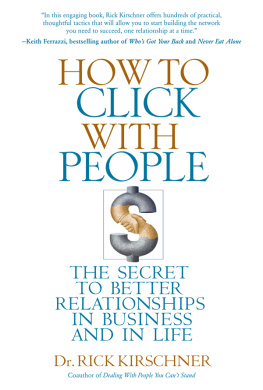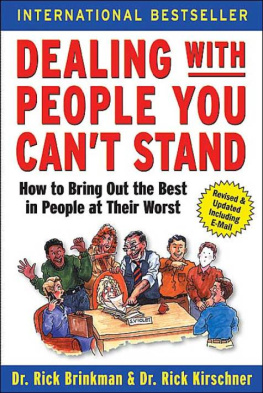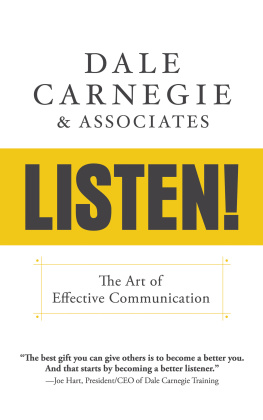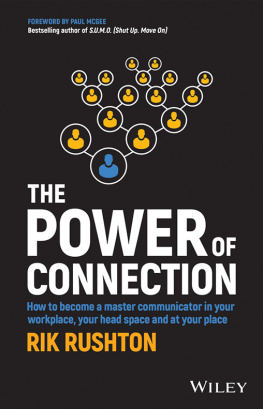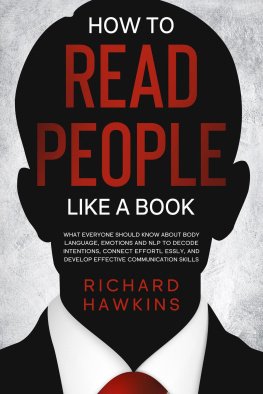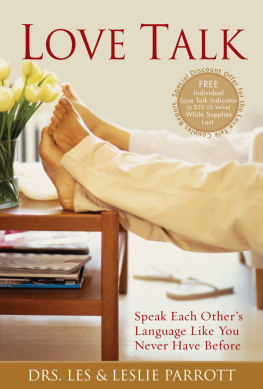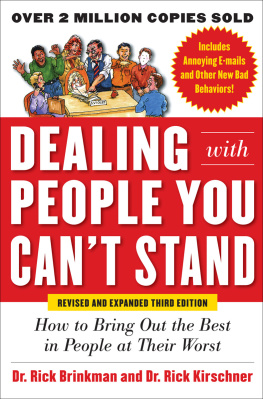
To Good People Everywhere
Who Care, Connect, and Work Each Day
For a Better Tomorrow.
Contents
Chapter 1
The Basic Click
Chapter 2
ClickabilityWhat Is It and Who Has It?
Chapter 3
A Short Course on Listening
Chapter 4
Click in Style
Chapter 5
Motivation to Click
Chapter 6
What My Cowbell Says About Me: Identifying Values to Click
Chapter 7
Clicking Electronically
Chapter 8
Troubleshooting
Chapter 9
The Click Zone
Chapter 10
Emotional Click Signals
Chapter 11
Make Your Point
Chapter 12
Stumbling Blocks
Chapter 13
Group Click
Chapter 14
Why We Click
Some people, you just click with. The Connection is quick and easy. They get you, you get them. Communication flows. You could tell them anything, and theyd know just what you mean. You feel seen, heard, and understood. You feel accepted and appreciated for who you really are. And all because youve clicked.
Click. Its that state of mind, that sense of being where everything falls into place. When you click, you gain a new perspective through the worldview of another person. You work better with others and get better results. You develop stronger partnerships and teams. You have a higher quality exchange of ideas and information, resolve interpersonal problems, and play a bigger part in what goes on around you. Best of all, you build real relationships, the kind that last a lifetime.
Chances are you think of click as an instantaneous thing. It either happens or it doesnt. People either get you or they dont. There are a handful of people in this world you click withand then theres everybody else. Whether you love them or hate them, youre just not ever going to really be in that groove.
Youre wrong.
You can learn to click. You can make click happen. Click is a skill like riding a bike or fixing a car, and as a skill, it can be learned.
Ive been teaching persuasion, conflict resolution, and relationship skills for close to three decades, and this work has taken me all over the world. Ive helped people learn to deal with difficult behavior in coworkers, bosses, and even relatives by teaching them to sort out their own sense of purpose and make fundamental changes in their habits. My clients want to make a meaningful difference in their lives, and Ive helped them to find the motivation and approach to accomplish just that. And all of this work is based on the idea that if people are going to get along with each other and get things done together, they first have to click.
Most of what you need to know about success in life is personal in nature. Ive learned, through my own experience and that of the people Ive worked with, that all of us need one another to have fulfilling work, successful careers, and meaningful lives. Regardless of your cultural background, your age group, or your social status, your need to get along with people is fundamental to your happiness and success. No matter how much technical skill you have in your particular field of expertise, no matter how smart you are, how capable or gifted, if you dont know how to get along with people, youre not going to be successful.
Your skill with other people is key to your success.
Whether the times are great, or the economy is in the tank, the people who do the best, who prosper and advance, are those who know how to connect with other people in a meaningful way. In other words, those who know how to click.
Thats where this book comes in. This book will teach you how to click, to build connections quickly, and then develop them as deeply as you desire. Its just a matter of knowing what to do, why to do it, and how to do it.
In the first half of this book, you will learn how to get people to get you, and how to get them too. Chapter 1 introduces the basic click you can make with anyone at any time. Chapter 2 looks at what makes a person clickablewhat makes it easy to click with someoneand how to develop that in yourself. Chapter 3 explores the role of listening in drawing people to you.
The next three chapters are about three major clickable areas (communication style, motivation, and values) that allow for deeper and closer connections between people.
The following two chapters provide solutions to common trouble spots in clicking: not meeting face-to-face and interacting with difficult people. Chapter 7 discusses how to click effectively via phones, e-mail, and social networking, and Chapter 8 demonstrates how to click with even pushy, critical, negative, unreliable, or sarcastic people.
The second half of the book explores how to get people to get your ideas. Chapter 9 covers the click zoneand how (and why) to get into it any time you want to get others onboard with an idea or task. Chapters 10 and 11 show how to present ideas so they appeal to both the head and the heart, and connect with the way people think and feel.
Chapter 12 reveals all the most common stumbling blocks that prevent ideas from clickingand how to avoid or recover from them. Chapter 13 looks at clicking with groups of people, and creating click within groups. And the final chapter puts all the pieces together to examine Why We Click.
Suggestions on
How to Use This Book
Read It Through
Read the book once, beginning to end. Be open to the ideas and imagine the possibilities. Consider taking a second pass through the book revisiting the material most applicable to you. If any of the ideas seem familiar, but youre not yet acting on what you know, let each lesson remind you to do in the real world what youve only imagined in the past.
Try It Out
Apply every lesson that interests you to at least one person, at least two times. The more you test an idea, the more you understand how it works and how to work with it.
Use It as a Reference
Once you know where everything is in the book, you can find the ideas that you need when you need them, and use them to connect with people in almost any situation. Youll find additional help along the way about where and when a particular lesson would be most valuable to you.
Partner Up
Find someone you already click with and bring him along with you. Read together. Listen together. Talk together. Click together. Working with a reliable partner in the process of learning will always work better than working alone.
Keep Going
Click into the online opportunities at TheArtofChange.com/Click. And follow my blog at www.theartofchange.com. These materials can be an ongoing resource for you as you continue to click with the people around you.
Chapter 1
The Basic Click
The Power of Resonance
Clicking happens in many ways but at its most basic level, its all about tapping into the profound power of resonance.
Resonance occurs when vibrating objects respond to other vibrations or frequencies that approximate their natural rate. Resonance makes many things possible: music, radio, TVand the click.
Weve all experienced the power of resonance. When we dance, we can feel a connection to our partnera sort of synchronicity. When we sing together in harmony, our voices resonate in the same frequency. The effect can touch us, move us, make us well up with tears, or move us to the beat. When we are so in sync that we can practically complete each others sentences, weve tapped into the power of resonance. And when weve tapped into the power of resonance, weve clicked.
Patterns of Similarity
When meeting someone for the first time, we all make a basic decision, and make it rather quickly: Is this person similar to me, or not? Without some pattern of similarity to hold us together, theres no resonancethat means no trust, no cooperation, no benefit of the doubtand no click. The more essential the pattern, the deeper the click with a person who shares that pattern.
Next page
